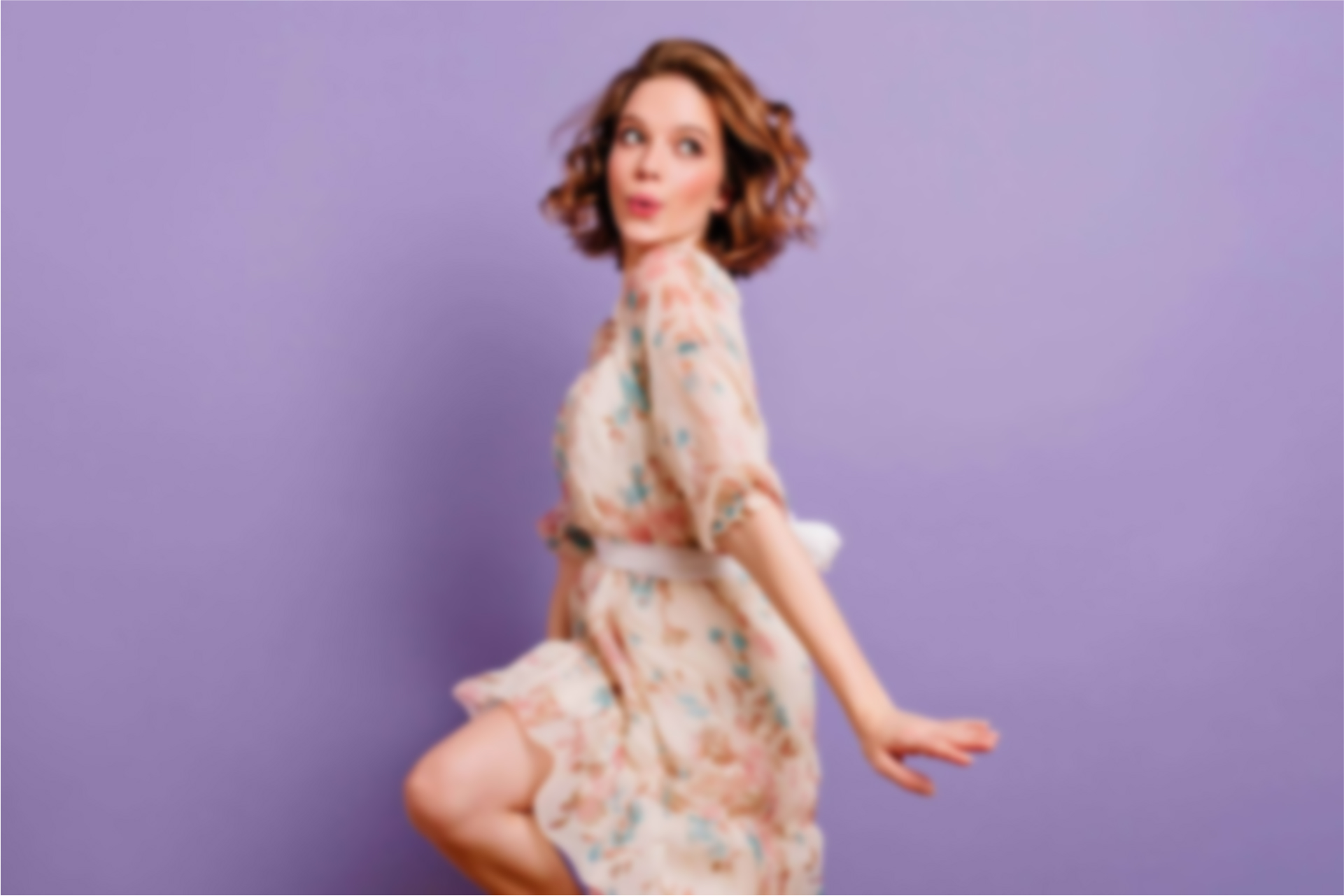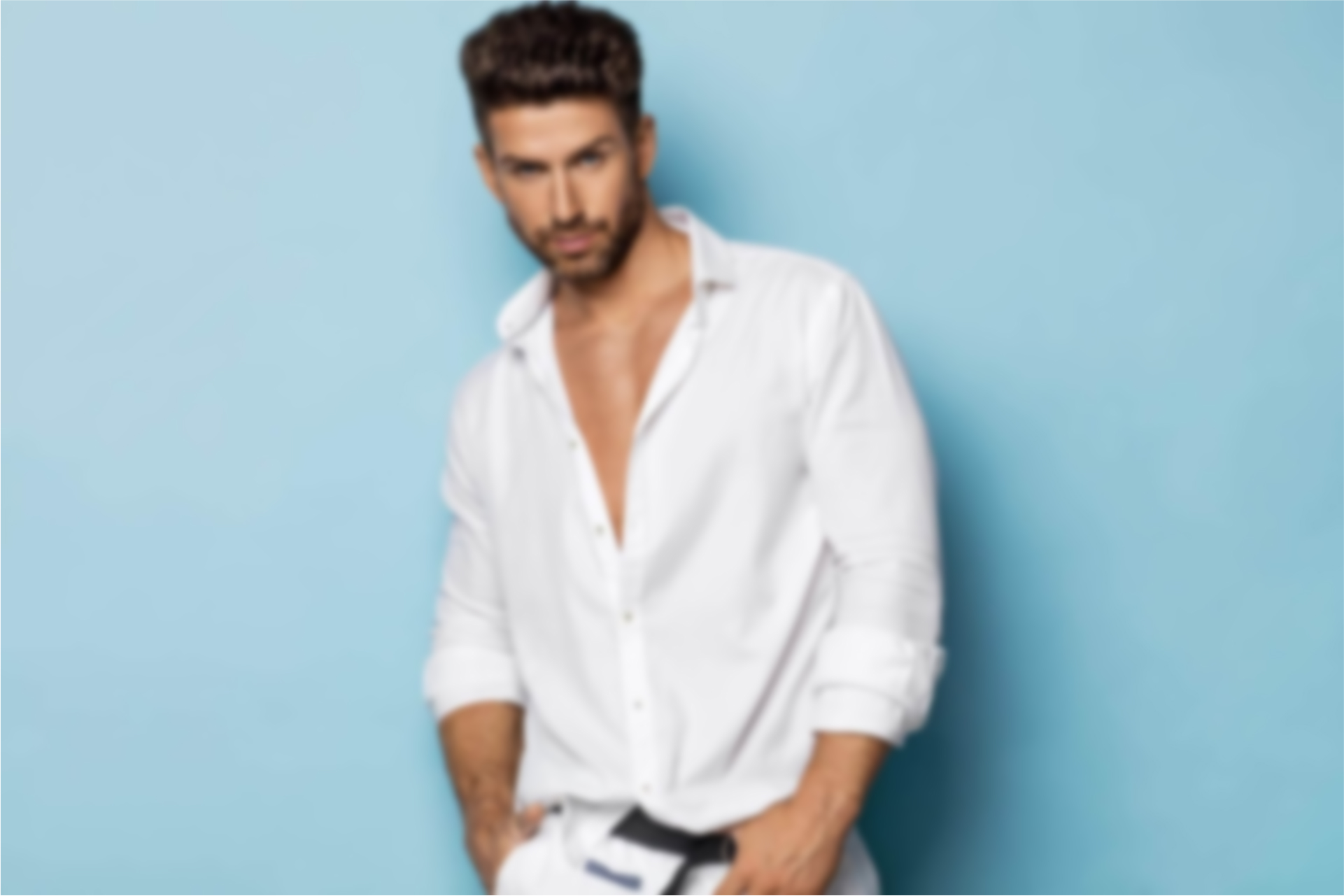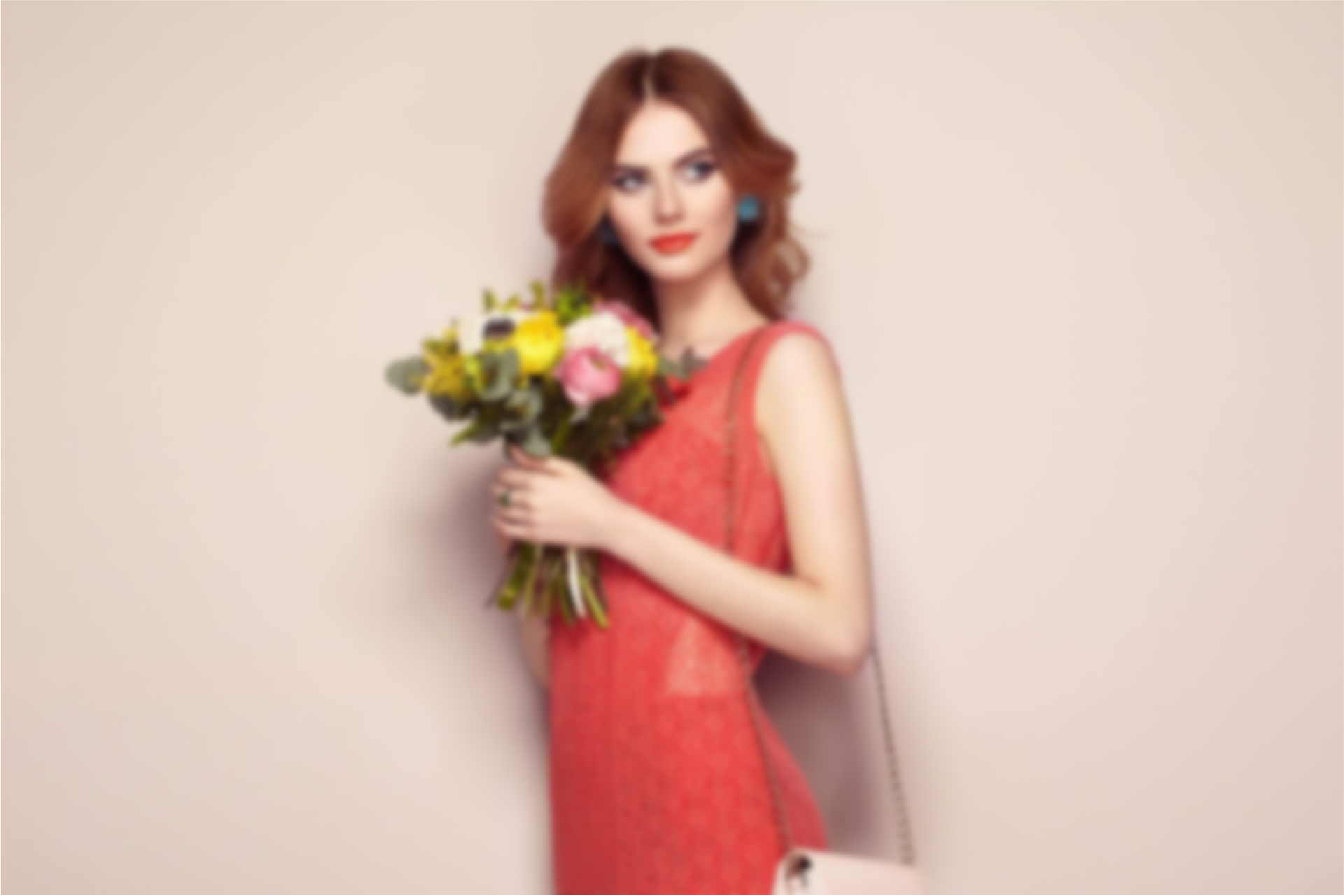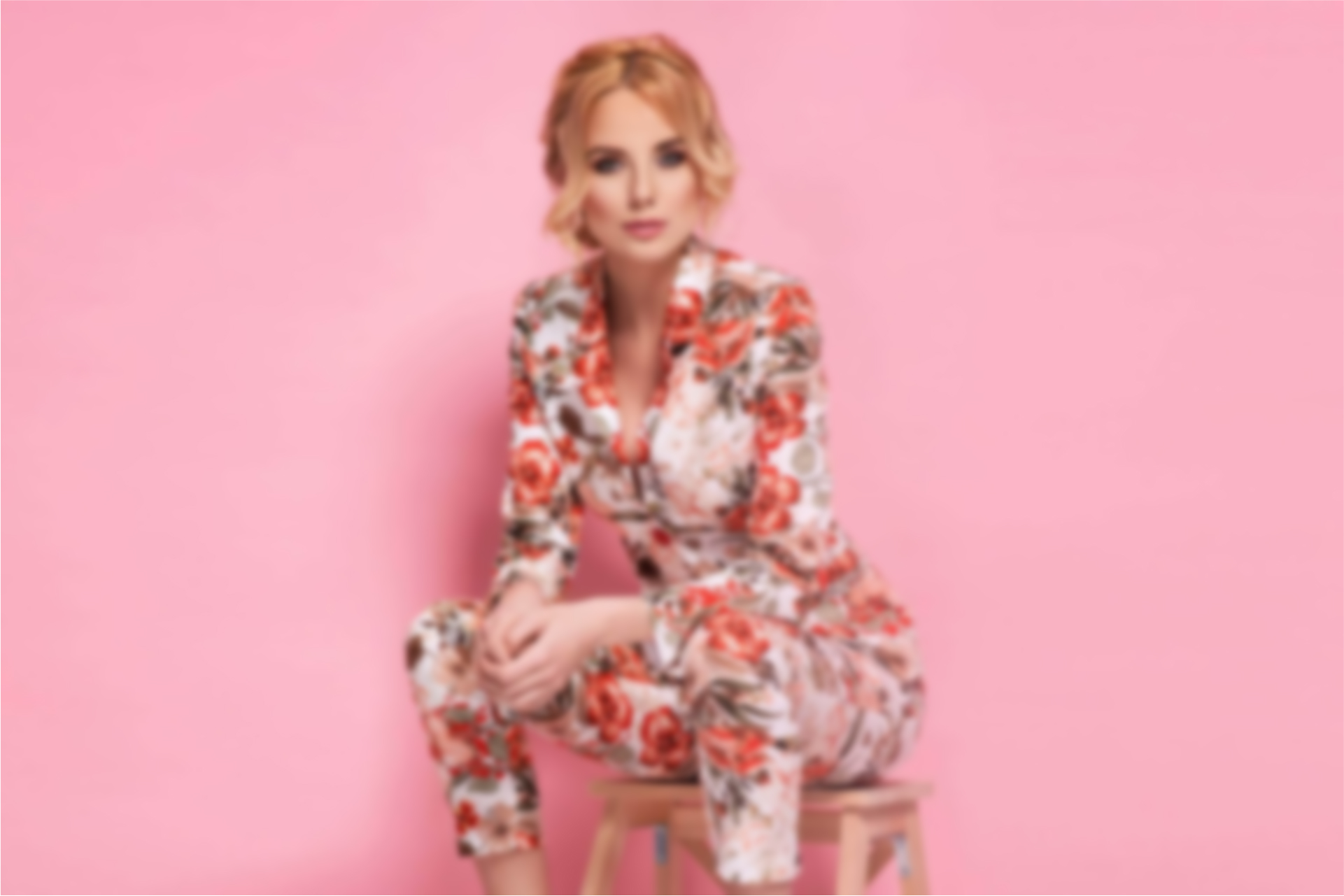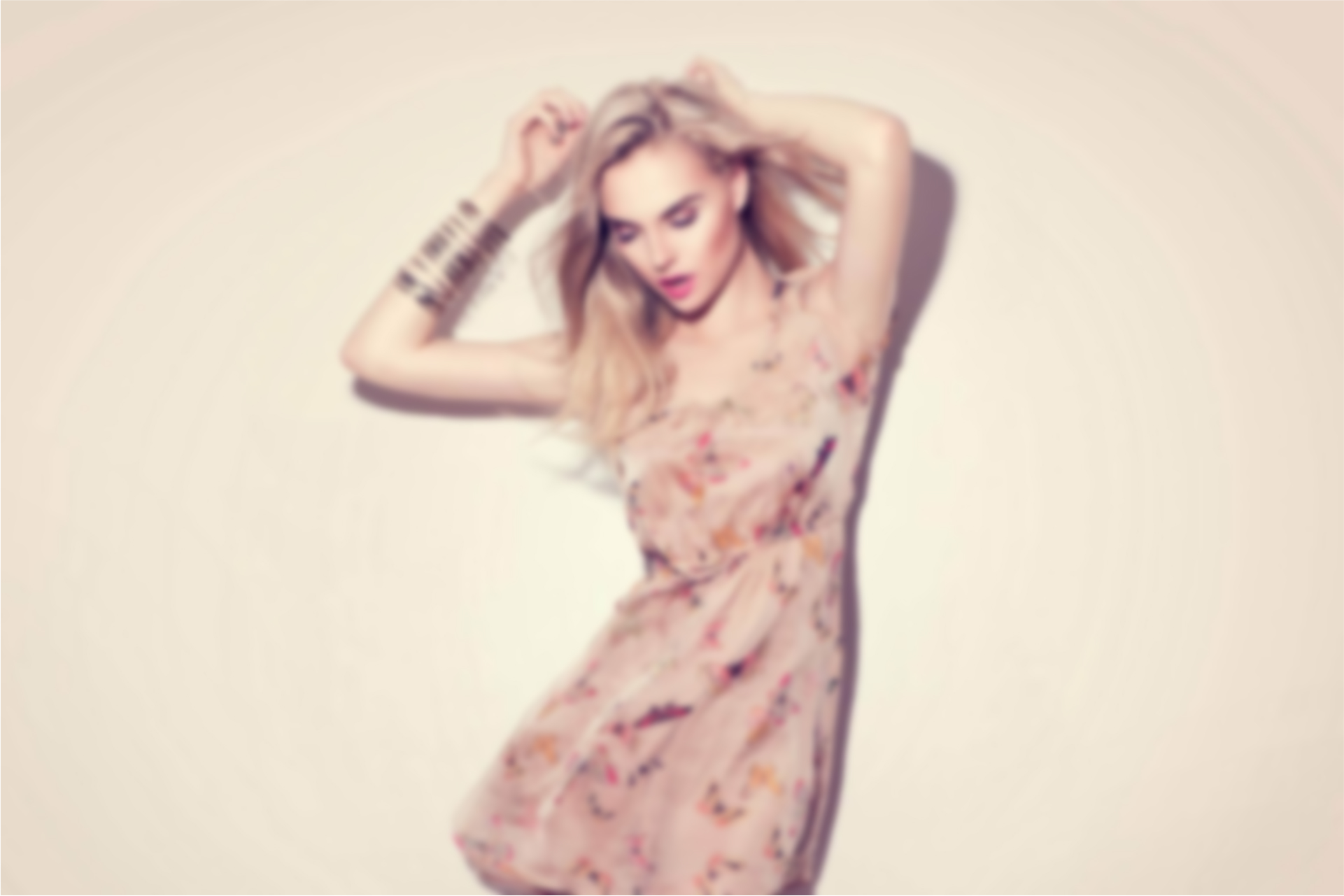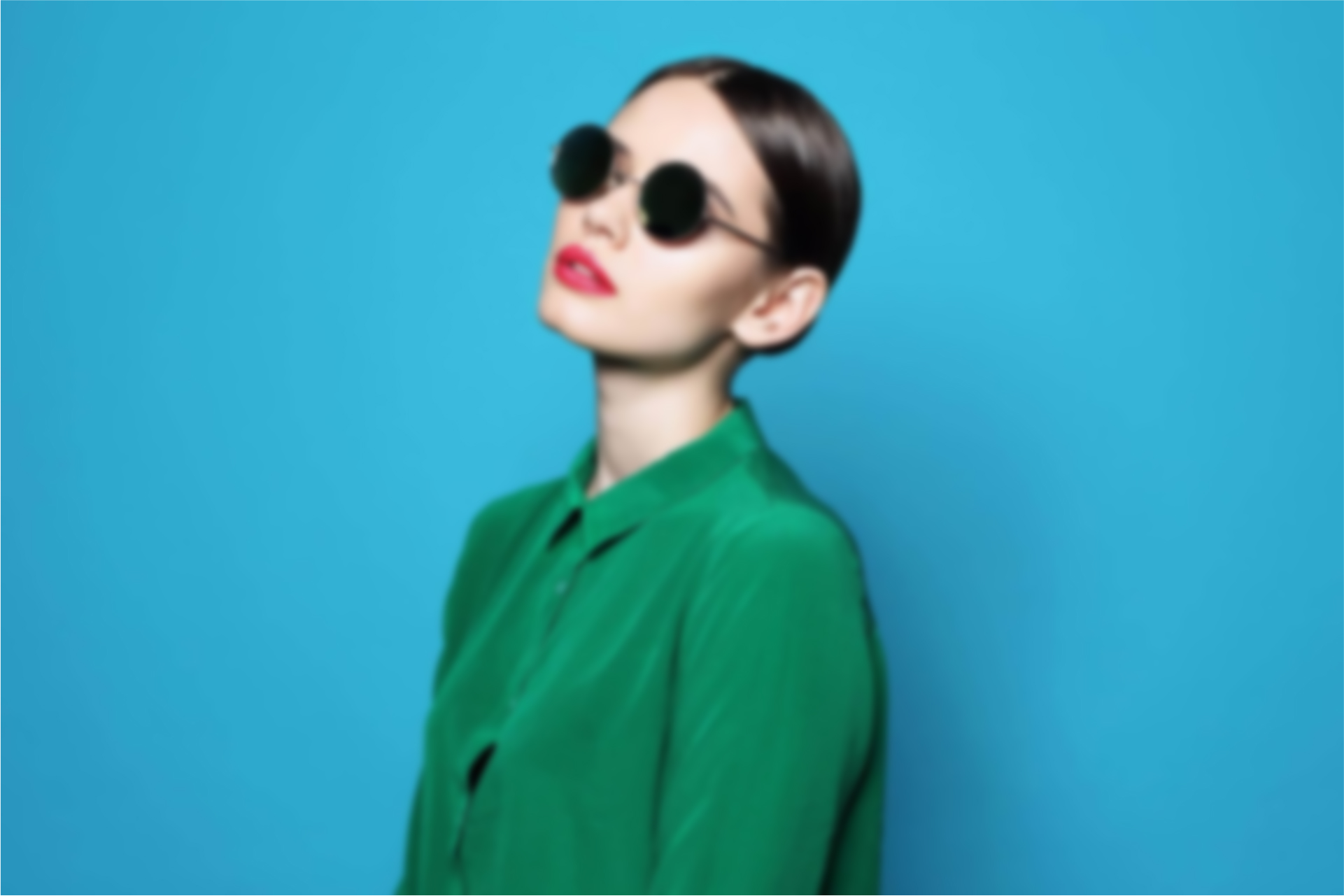Discover Knit Fabric Blouses For Women sourced by Dress Merchant, your trusted apparel buying agent for top-quality garments. We connect global buyers with leading knitwear manufacturers and exporters in Bangladesh. Our expert sourcing solutions ensure stylish, comfortable, and durable knit fabric blouses tailored to your market needs. Partner with Dress Merchant for competitive pricing, timely delivery, and unmatched quality in women’s knitwear apparel sourcing.
Thank you for reading this post, don't forget to subscribe!1. The Enduring Allure of Knit Fabric Blouses
Knit fabric blouses for women represent a cornerstone of modern fashion, offering a unique blend of comfort, versatility, and style. Unlike their woven counterparts, knit fabrics are constructed from interlooping yarns, creating a naturally stretchy and soft material that drapes beautifully.
This fundamental difference in construction is precisely what gives knit blouses their distinct appeal, allowing for a garment that moves with the wearer, provides exceptional breathability, and resists wrinkling far more effectively than many other textiles. From the delicate embrace of a fine-gauge knit to the cozy warmth of a chunkier texture, the spectrum of knit fabrics available ensures a blouse for every occasion and preference.
Their inherent flexibility also translates into a more forgiving fit, making them a popular choice for women seeking both elegance and ease in their daily wardrobe. The evolution of knitting technology has further expanded the possibilities, leading to innovative blends and finishes that enhance performance attributes like moisture-wicking and shape retention, solidifying their position as a truly essential garment in contemporary womenswear.
1.1. Unpacking the Comfort Factor
The unparalleled comfort of knit fabric blouses stems directly from their unique construction. The interconnected loops of yarn create a fabric that stretches and recovers, providing a sensation of unrestricted movement that is often lacking in more rigid woven garments. This elasticity means that a knit blouse conforms to the body’s contours without feeling constrictive, allowing for a greater range of motion throughout the day.
Furthermore, the inherent breathability of many knit structures helps regulate body temperature, making them suitable for various climates and activities. Whether it’s a light cotton knit for summer or a cozy wool blend for winter, the material’s ability to adapt to environmental changes contributes significantly to the wearer’s overall comfort.
This aspect is particularly appreciated in active lifestyles or during long hours of wear, where discomfort can quickly detract from an outfit’s appeal. The softness against the skin is another key component of their comfort, often surpassing the feel of many woven fabrics, leading to a consistently pleasant wearing experience that encourages repeated use.
1.2. Versatility in Styling Options
Knit fabric blouses are chameleon-like in their adaptability, effortlessly transitioning across a multitude of style aesthetics. Their inherent flexibility allows them to be dressed up or down with remarkable ease, making them a foundational piece in any versatile wardrobe. A simple, well-fitting knit top can serve as the perfect base layer under a tailored blazer for a professional setting, or it can be paired with distressed jeans and sneakers for a relaxed, casual look.
The vast array of textures and weights available further expands their styling potential; a delicate silk-blend knit can exude sophisticated elegance for an evening out, while a substantial cotton knit offers a more relaxed and comfortable vibe for everyday wear.
They can be tucked into high-waisted skirts for a polished silhouette, left untucked over slim-fit trousers for a laid-back feel, or even layered under cardigans and vests for added warmth and dimension. This intrinsic versatility makes knit blouses an invaluable asset for creating diverse outfits from a relatively small collection of garments, offering endless possibilities for personal expression.
1.3. Durability and Longevity
Beyond comfort and style, the inherent structure of knit fabrics contributes significantly to the durability and longevity of blouses made from them. The interlocking loop construction provides a natural resilience, making knit garments less prone to tearing and fraying compared to many woven fabrics. When a single thread breaks in a woven fabric, it can lead to a visible tear or unraveling; however, in a knit, the loops redistribute tension, often preventing minor snags from escalating into significant damage.
Furthermore, many knit fabrics are naturally resistant to wrinkles, which not only saves time on ironing but also contributes to the garment’s overall appearance retention over time. The ability of knits to stretch and then return to their original shape also helps maintain the garment’s fit and form through repeated wear and washing, extending its lifespan.
This means that a high-quality knit blouse can withstand the rigors of frequent use and laundering, continuing to look good for years, representing a smart investment for the conscientious consumer seeking enduring pieces for their wardrobe.
2. Deciphering the Different Types of Knit Fabrics
The world of knit fabric blouses is vast and varied, largely due to the diverse array of knit structures and fiber compositions available. Each type of knit fabric brings its own unique characteristics to a blouse, influencing everything from its drape and texture to its warmth and breathability. Understanding these distinctions is crucial for making informed choices, whether you are seeking a lightweight summer top, a cozy winter layer, or a sophisticated piece for professional wear.
From the ubiquitous jersey knit to the intricate rib knit and the luxurious interlock, the specific way the yarns are looped and the fibers they are made from dictate the final properties of the fabric. This knowledge empowers consumers to select blouses that not only meet their aesthetic preferences but also align with their functional needs, ensuring comfort and suitability for various climates and occasions.
The continuous innovation in textile engineering also means new and improved knit fabrics are constantly emerging, further broadening the options available to the modern woman.
2.1. Jersey Knit: The Everyday Essential
Jersey knit is arguably the most common and versatile type of knit fabric used for blouses, and for good reason. It is characterized by its smooth, flat appearance on the face side and a slightly textured, looped appearance on the reverse. This single-knit construction results in a fabric that is inherently stretchy, soft, and comfortable against the skin.
Jersey knit blouses are known for their excellent drape, allowing them to flow gracefully over the body without clinging too tightly. They are also relatively lightweight and breathable, making them suitable for a wide range of temperatures and layering. From basic T-shirt styles to more elaborate draped designs, jersey knit provides the foundational material for countless casual and semi-casual blouses.
Its ease of care and resistance to wrinkling further contribute to its popularity, making it a go-to choice for everyday wear where comfort and practicality are paramount.
2.2. Rib Knit: Structure and Stretch
Rib knit fabrics are easily identifiable by their distinctive vertical ribs or columns, which are created by alternating knit and purl stitches. This construction gives rib knits a higher degree of elasticity and recovery compared to plain jersey knits, allowing them to stretch considerably and then snap back into shape.
This makes rib knit blouses particularly effective for garments that require a close, body-hugging fit without feeling restrictive, such as fitted tops or turtlenecks. The ribbed texture also adds a visual and tactile dimension to the fabric, providing a subtle surface interest that can elevate a simple design.
Beyond their stretch, rib knits are often thicker and more substantial than jersey, offering enhanced warmth, which makes them a popular choice for cooler weather blouses. Their inherent structure also contributes to their durability, as the robust construction helps them maintain their form even after repeated wear and washing.
2.3. Interlock Knit: Premium Softness and Stability
Interlock knit is a double-knit fabric, meaning it is essentially two single knits joined together. This construction results in a fabric that is remarkably stable, thick, and smooth on both sides, resembling a woven fabric in its uniformity but retaining the inherent stretch and softness of a knit. Interlock knit blouses offer a premium feel due to their plush hand and superior drape.
They are less prone to curling at the edges than single jersey and provide excellent opacity, making them a preferred choice for blouses where a more structured and polished look is desired without sacrificing comfort. The density of interlock also contributes to its durability and resistance to pilling, ensuring that blouses made from this fabric maintain their pristine appearance over time.
Due to their refined quality and enhanced stability, interlock knit blouses are often found in more elevated casual wear and smart-casual collections, bridging the gap between everyday comfort and refined style.
2.4. Terry Knit and French Terry: Casual Comfort
Terry knit, and its variation French terry, are distinct knit fabrics known for their looped pile on one or both sides, creating a soft, absorbent, and comfortable texture. Traditional terry knit features loops on both sides, often seen in towels, while French terry typically has loops on one side and a smooth, flat knit on the other. For blouses, French terry is more commonly used due to its more refined appearance and lighter weight compared to full terry.
French terry blouses offer a cozy, casual aesthetic, perfect for relaxed weekends or comfortable everyday wear. The loops on the reverse side provide a soft hand against the skin and contribute to the fabric’s absorbency and breathability, making them suitable for active wear or warmer climates.
While not typically associated with formal wear, French terry blouses are excellent for creating stylishly comfortable pieces, often featuring relaxed fits, hooded designs, or sporty details, embodying a laid-back yet fashionable sensibility.
3. The Art of Fiber Blending in Knit Blouses
The performance and aesthetic qualities of knit fabric blouses are not solely determined by their knit structure but are significantly influenced by the fibers from which they are spun. Furthermore, the art of fiber blending plays a pivotal role in creating fabrics with optimized characteristics, combining the strengths of different fibers to mitigate their weaknesses.
A blouse made from 100% cotton will behave differently than one made from a cotton-polyester blend, just as a pure silk knit will offer a distinct experience compared to a silk-cashmere blend. Understanding the properties of various fibers—natural, synthetic, and regenerated—and how they interact when blended is key to appreciating the diverse range of knit blouses available on the market.
This intricate process allows manufacturers to engineer fabrics that are not only beautiful but also highly functional, offering enhanced durability, improved drape, better moisture management, or superior warmth-to-weight ratios, catering to a wide array of consumer needs and preferences for different occasions and climates.
3.1. Natural Fibers: Timeless Comfort and Breathability
Natural fibers form the foundation of many beloved knit fabric blouses, cherished for their inherent comfort, breathability, and luxurious feel. Cotton, for instance, is a perennial favorite due to its softness, absorbency, and hypoallergenic properties. Cotton knit blouses are excellent for everyday wear, offering superb breathability that keeps the wearer cool and comfortable in warmer climates.
Its versatility allows it to be spun into various knit types, from lightweight jerseys to substantial interlocks. Wool, especially fine merino wool, provides exceptional warmth without bulk, remarkable breathability, and natural moisture-wicking capabilities, making it ideal for cooler weather blouses that still offer comfort. It also has natural odor resistance, a significant advantage.
Silk knit blouses, though less common, offer unparalleled softness, a beautiful lustrous drape, and excellent temperature regulation, providing a touch of luxury and sophistication. While natural fibers often require more delicate care, their superior comfort and environmental benefits continue to make them highly desirable choices for high-quality knit blouses.
3.2. Synthetic Fibers: Enhancing Performance
Synthetic fibers play a crucial role in enhancing the performance characteristics of knit fabric blouses, often by being blended with natural fibers or used independently for specific purposes. Polyester, for example, is highly valued for its exceptional durability, wrinkle resistance, and quick-drying properties. Polyester knit blouses are often more resilient to wear and tear, maintain their shape well, and are easier to care for, making them suitable for active lifestyles or travel.
Nylon offers superior strength and elasticity, often seen in blended knits to improve stretch and recovery. Acrylic is frequently used as a wool substitute due to its softness, warmth, and resistance to shrinking and fading, providing a more affordable yet cozy option.
The primary advantage of synthetic fibers lies in their ability to add functional benefits such as enhanced moisture-wicking (especially in performance wear), improved shape retention, and increased longevity, allowing knit blouses to meet the demands of modern living while often being more budget-friendly.
3.3. Regenerated Fibers: Blending Nature and Innovation
Regenerated fibers represent a fascinating category in textile production, bridging the gap between natural and synthetic materials. These fibers are derived from natural cellulose sources, such as wood pulp, which are then processed and spun into textile fibers. Rayon (Viscose) is a classic example, known for its silky drape, softness, and excellent breathability, making it a popular choice for blouses that require a fluid and luxurious feel.
It dyes beautifully and offers a comfortable alternative to silk. Modal, a type of rayon, is even softer and more resistant to shrinkage and fading than conventional rayon, providing enhanced durability and a smooth, elegant finish. Lyocell (Tencel™) is another prominent regenerated fiber celebrated for its exceptional softness, strength, and eco-friendly production process.
Lyocell knit blouses offer superb moisture management, breathability, and a beautiful drape, making them ideal for comfortable yet refined garments. These fibers allow for the creation of knit blouses that combine the desirable qualities of natural materials, such as comfort and breathability, with the enhanced performance and sustainability aspects often associated with engineered fibers, offering a compelling choice for the discerning consumer.
4. Design Elements: Shaping the Silhouette of Knit Blouses
The appeal of knit fabric blouses extends far beyond their material composition; it is profoundly influenced by their design elements, which dictate their silhouette, fit, and overall aesthetic. Unlike woven garments that rely heavily on darts and seams to create shape, knit blouses often utilize the inherent stretch and drape of the fabric to achieve various forms, from relaxed and flowing to sleek and fitted.
The choice of neckline, sleeve style, hemline, and embellishments all contribute to the final look and feel of a blouse, determining its suitability for different body types, occasions, and personal styles. A well-designed knit blouse expertly balances the material’s properties with thoughtful construction, ensuring both comfort and visual appeal.
This attention to detail in design allows for an astonishing variety within the category of knit blouses, enabling women to find pieces that perfectly complement their individual preferences and wardrobe needs.
4.1. Neckline Variations
The neckline is a pivotal design element that significantly impacts the overall impression of a knit blouse, framing the face and drawing attention to the upper body. A crew neck offers a classic, modest, and universally flattering option, suitable for everyday wear and layering. It provides a clean, simple line that can be easily accessorized.
A V-neck elongates the neck and creates a more open, often more flattering, silhouette, making it a popular choice for both casual and dressier knit blouses. The depth of the V can vary from subtle to plunging, offering different degrees of allure. A scoop neck provides a wider, more rounded opening than a crew neck, revealing a bit more of the collarbones and offering a relaxed yet feminine feel. Boat necks, characterized by their wide, horizontal line extending from shoulder to shoulder, create an elegant and sophisticated look, subtly highlighting the collarbones.
Other variations include turtlenecks for warmth and a chic, structured appearance, and cowl necks, which feature soft, draped folds for a luxurious and artistic touch. Each neckline choice brings a distinct character to the knit blouse, allowing for diverse styling possibilities.
4.2. Sleeve Styles and Cuffs
The sleeve style of a knit blouse plays a significant role in its silhouette and comfort, contributing to both its functionality and fashion appeal. Set-in sleeves are the most common, sewn into the armhole seam, providing a traditional and often more structured fit. Raglan sleeves, which extend in a diagonal line from the underarm to the neckline, offer a relaxed and sporty aesthetic, providing greater freedom of movement due to their seamless shoulder line.
Dolman sleeves, also known as batwing sleeves, are cut as part of the body of the blouse, creating a wide armhole that tapers to a fitted cuff, offering a dramatically relaxed and flowing silhouette. The length of the sleeve also varies greatly: short sleeves (cap, flutter, or regular) are ideal for warmer weather, three-quarter sleeves offer a sophisticated and versatile option, while long sleeves provide warmth and coverage.
Cuffs further define the sleeve, ranging from simple hemmed cuffs to more elaborate ribbed cuffs for a snug fit, or even buttoned cuffs for a more tailored look, adding detail and polish to the overall design of the knit blouse.
4.3. Hemlines and Blouse Lengths
The hemlines and overall length of knit fabric blouses are critical design elements that influence how they drape and how they can be styled with other garments. A cropped length sits above the waist, ideal for pairing with high-waisted skirts or trousers to create a modern, balanced silhouette. A standard or hip-length blouse is the most common, ending around the hip bone, offering versatility for tucking in or wearing untucked.
This length is universally flattering and suitable for a wide range of body types. Tunic length blouses extend below the hip, sometimes even reaching mid-thigh, providing more coverage and often a relaxed, flowing fit.
These are frequently paired with leggings or slim-fit trousers. The shape of the hemline can also vary: a straight hem provides a clean, sharp line; a curved or high-low hem adds softness and visual interest, often longer in the back than in the front; and a split hem (side slits) allows for greater movement and a more relaxed drape when worn untucked. Each hemline and length choice contributes to the overall proportion and styling potential of the knit blouse, allowing for diverse aesthetic expressions.
4.4. Embellishments and Details
Beyond the fundamental structural elements, embellishments and subtle details can significantly elevate the design of a knit fabric blouse, transforming a simple piece into a statement garment. Gathering or ruching can be strategically placed to create flattering drapes, add texture, or accentuate certain areas of the body, often seen around necklines, cuffs, or side seams.
Pleating, while less common in stretchy knits than in wovens, can be achieved with specific knit structures or by manipulating the fabric to create subtle folds that add volume or design interest. Lace inserts or trim, often at the neckline, sleeves, or hem, introduce a touch of femininity and sophistication. Buttons, beyond their functional purpose, can serve as decorative elements, especially when chosen for their unique material, color, or shape, adorning plackets or cuffs.
Embroidery or appliqués add bespoke artistry and personalization, ranging from subtle monograms to elaborate floral motifs. Even seemingly minor details like the quality of the stitching, the finish of the seams, or the presence of a delicate ribbed trim can collectively contribute to the perception of a blouse’s overall quality and design thoughtfulness, distinguishing it from more generic offerings.
5. The Perfect Fit: Sizing and Silhouette Considerations
Achieving the perfect fit in a knit fabric blouse is paramount for both comfort and aesthetic appeal. Unlike rigid woven garments, the inherent stretch of knit fabrics allows for a more forgiving fit, but understanding the nuances of sizing and silhouette is still crucial. A well-fitting knit blouse should drape beautifully without clinging uncomfortably, and it should allow for a full range of motion without feeling restrictive.
The ideal fit is highly subjective and depends on personal preference, the intended style, and the specific knit structure. Some women prefer a relaxed, oversized look, while others seek a sleek, body-conscious silhouette. Moreover, different knit types behave differently; a jersey knit might have a looser drape than a comparable interlock knit of the same size.
Therefore, paying attention to fabric composition, specific brand sizing charts, and even trying on different sizes can make a significant difference in finding a knit blouse that feels and looks just right, flattering the wearer’s figure and complementing their personal style.
5.1. Understanding Body Types
Recognizing one’s body type is a foundational step in selecting knit fabric blouses that flatter and enhance the natural silhouette. For pear-shaped figures (wider hips, narrower shoulders), blouses with wider necklines (boat neck, scoop neck), embellishments on the upper body, or designs that add volume to the shoulders can help balance proportions.
Apple-shaped figures (fuller midsection, slender legs) benefit from knit blouses that skim over the torso without clinging, such as A-line cuts, empire waist styles, or those with vertical details that create a lengthening effect. V-necks can also be particularly flattering. Hourglass figures (balanced bust and hips, defined waist) are often complemented by knit blouses that cinch at the waist or are made from stretchy knits that highlight their natural curves, such as fitted rib knits. Rectangle-shaped figures (less defined waist, relatively straight up and down) can add shape with knit blouses that have peplums, ruffles, or details that create the illusion of a waistline, or by layering.
Inverted triangle figures (broader shoulders, narrower hips) can balance their proportions with knit blouses that have softer, wider hemlines, or details that draw attention downwards, while avoiding excessive shoulder padding or broad necklines. Understanding these general guidelines empowers women to choose knit blouses that celebrate their unique physique.
5.2. Relaxed vs. Fitted Silhouettes
The choice between a relaxed and a fitted silhouette in knit fabric blouses significantly impacts the overall look and feel of an outfit, reflecting both personal style and the intended occasion. A relaxed silhouette offers comfort and a laid-back aesthetic, characterized by a looser drape that skims over the body without hugging. These blouses often feature more generous cuts, wider sleeves, and softer constructions.
They are ideal for casual wear, weekend outings, or simply when seeking maximum comfort. Examples include oversized tunics, flowing dolman-sleeve tops, or slouchy crew necks. This silhouette provides freedom of movement and a forgiving fit, often lending itself well to layering. In contrast, a fitted silhouette in a knit blouse is designed to closely follow the body’s contours, highlighting the natural shape. These blouses often utilize more stretchy knit fabrics like rib knits or fine-gauge jerseys with elastane for superior shape retention.
They are suitable for more polished or formal settings, or when a sleek, streamlined look is desired, often pairing well with tailored trousers or skirts. While offering less ease of movement than relaxed styles, a well-fitted knit blouse provides a sophisticated and flattering profile, emphasizing the figure in a tasteful manner.
5.3. Importance of Drape
The drape of a knit fabric blouse refers to how the fabric hangs and folds on the body, a critical characteristic influenced by the fiber content, knit structure, and weight of the material. A fluid or soft drape means the fabric flows gracefully and softly, conforming to the body’s curves without clinging or adding unnecessary bulk.
This type of drape is often found in knit blouses made from rayon, modal, silk, or fine-gauge cotton jersey, and is highly desirable for elegant, sophisticated looks or for blouses that are meant to skim the body. Such blouses create a flattering silhouette that moves beautifully with the wearer. Conversely, a structured or crisp drape indicates that the fabric holds its shape more firmly, with less tendency to cling or wrinkle.
This is often characteristic of interlock knits, heavier cotton knits, or blends with higher proportions of synthetic fibers. Blouses with a structured drape can offer a more tailored and polished appearance, sometimes resembling woven garments in their ability to hold form. Understanding the drape of a knit fabric is essential for predicting how a blouse will look and feel when worn, ensuring it aligns with the desired aesthetic and comfort level.
6. Seasonal Styling: Adapting Knit Blouses for Any Climate
Knit fabric blouses possess remarkable adaptability, allowing them to be styled effectively across all four seasons. Their inherent versatility, influenced by variations in fiber content, knit weight, and design, makes them an indispensable component of a year-round wardrobe. The key to successful seasonal styling lies in understanding how different knit properties interact with climate conditions. A lightweight, breathable knit crafted from cotton or linen is perfect for summer, while a substantial wool or cashmere blend provides essential warmth during winter. Furthermore, the ability of knit blouses to be layered makes them transitional heroes, easily adapting to fluctuating temperatures in spring and autumn. This thoughtful approach to selecting and styling knit blouses ensures comfort and fashion appropriateness, regardless of the weather, demonstrating their enduring appeal and functional superiority over less adaptable garments.
6.1. Summer Breeze: Lightweight Knits
For the warmer months, knit fabric blouses are chosen for their breathability, light weight, and ability to keep the wearer cool and comfortable. Cotton jersey is a prime contender, offering natural breathability and excellent absorbency, making it perfect for everyday summer wear. Its soft hand feel and effortless drape ensure comfort even on humid days.
Linen blends introduce the natural crispness and high breathability of linen, often blended with cotton or rayon to soften the drape and reduce wrinkling, creating an ideal summer knit that feels airy and natural. Rayon or Modal knits provide a beautiful, fluid drape and a silky smooth feel against the skin, offering a luxurious yet cool option for warmer evenings or dressier summer occasions.
These regenerated fibers are known for their excellent moisture-wicking properties, contributing to wearer comfort. Light-colored and pastel knit blouses also reflect sunlight, further enhancing coolness. Key design elements for summer knit blouses include sleeveless or short-sleeve styles, scoop or V-necks, and relaxed fits that allow for maximum airflow, embodying the essence of effortless summer chic.
6.2. Autumn Layers: Transitional Pieces
As temperatures begin to drop in autumn, knit fabric blouses become essential transitional pieces, perfect for layering and providing warmth without excessive bulk. Fine-gauge merino wool knits are an excellent choice, offering natural temperature regulation, breathability, and impressive warmth-to-weight ratios, making them comfortable indoors and outdoors.
Their natural resistance to odor and wrinkles also makes them ideal for travel. Cotton-blend knits with a slightly heavier weight or a more substantial interlock construction provide cozy comfort as the air turns cooler, easily pairing with jackets or cardigans. Rib knit blouses also come into their own during autumn, offering a snug yet stretchy fit that is perfect for layering under vests or blazers, adding texture and warmth. Autumnal knit blouses often feature three-quarter or long sleeves, and necklines like crew or boat necks offer sufficient coverage.
Earthy tones, rich jewel tones, and classic neutrals dominate the autumn palette, allowing knit blouses to seamlessly integrate into layered ensembles, providing both comfort and sophisticated style for the changing season.
6.3. Winter Warmth: Cozy and Insulating Knits
During the colder winter months, knit fabric blouses are selected primarily for their insulating properties, providing essential warmth and comfort. Wool knits, particularly from lambswool or heavier merino, offer superior insulation due to their crimped fibers trapping air, creating a natural barrier against the cold. Cashmere blends provide luxurious softness and exceptional warmth with minimal weight, making them a premium choice for winter blouses that feel exquisitely comfortable against the skin.
Acrylic or synthetic blends can also offer significant warmth at a more accessible price point, often designed to mimic the softness of natural fibers while providing enhanced durability and ease of care. These heavier knits are frequently found in styles like turtlenecks, mock necks, or thicker crew necks, designed to provide ample coverage and retain body heat.
Winter knit blouses often feature long sleeves and a more substantial feel, sometimes with textured patterns like cable knits or chunky ribs that add visual interest and a cozy aesthetic, making them perfect for staying warm and stylish during the chilliest days.
6.4. Spring Freshness: Light and Lively Options
Spring brings a desire for lighter fabrics and fresh colors, and knit fabric blouses rise to the occasion with options that capture the season’s renewed energy. Lightweight cotton knits, often in brighter hues or subtle prints, are perfect for spring, offering breathability and comfort as temperatures rise. They provide a comfortable base layer or can be worn on their own.
Modal or Lyocell knits are also excellent choices for spring, renowned for their softness, beautiful drape, and superior breathability, providing a luxurious feel without being heavy. These regenerated fibers often have a subtle sheen that adds to their fresh appeal. Knit blouses for spring might feature delicate textures, open-knit patterns, or interesting stitch details that add visual interest without adding bulk.
Design elements often include shorter sleeves, refreshing necklines like scoop or boat necks, and versatile lengths that can be tucked into skirts or worn over trousers. The palette shifts towards pastels, vibrant florals, and crisp whites, allowing knit blouses to embody the light, airy, and optimistic spirit of the spring season.
7. Care and Maintenance: Preserving Your Knit Blouses
Proper care and maintenance are crucial for preserving the beauty, shape, and longevity of your knit fabric blouses. Due to their unique construction, knit garments can be more susceptible to stretching, shrinking, or pilling if not handled correctly. Different fiber compositions also require specific care routines; a delicate silk knit will not withstand the same treatment as a durable cotton blend.
Understanding the care labels, choosing appropriate washing methods, and employing proper drying and storage techniques are all essential steps in ensuring your favorite knit blouses remain in pristine condition for years to come. This diligent approach not only protects your investment but also maintains the garment’s original fit, feel, and aesthetic appeal, making it a worthwhile effort for any wardrobe.
7.1. Decoding Care Labels
The care label inside your knit fabric blouse is your primary guide to proper maintenance. It provides specific instructions tailored to the fabric composition and construction. Look for symbols indicating recommended washing temperature (e.g., cold, warm, hot), the appropriate cycle (e.g., hand wash, delicate, permanent press), and whether bleach is safe to use.
Drying instructions are also crucial: symbols will indicate whether to tumble dry (and at what heat), line dry, or lay flat to dry. Ironing guidelines, including temperature settings, are also provided to prevent scorching or damaging delicate fibers. Furthermore, some labels will specify dry cleaning only or highlight precautions like avoiding twisting or wringing.
Ignoring these instructions can lead to irreversible damage, such as shrinkage, stretching out of shape, color bleeding, or pilling. Taking a moment to understand these universal laundry symbols and following their guidance is the most effective way to ensure the long-term health and appearance of your knit blouses, protecting their quality and extending their wearability.
7.2. Washing Best Practices
When it comes to washing knit fabric blouses, gentle handling is key to preventing damage and maintaining their shape. For most knit blends, cold water is generally recommended to prevent shrinking and preserve colors. Delicates or fine knits like silk, cashmere, or rayon should ideally be hand-washed using a mild detergent, gently squeezing the water through the fabric without twisting or wringing.
If using a washing machine, always select the delicate or hand wash cycle and place blouses in a mesh laundry bag to protect them from snagging or excessive agitation. Avoid overloading the machine, as this can lead to friction and pilling. For knit blouses with special embellishments, consider spot cleaning or dry cleaning as indicated on the care label.
Regardless of the method, always use a detergent formulated for delicate garments to minimize harshness on the fibers. Proper washing practices are critical for preserving the integrity of the knit structure, preventing stretching, and ensuring the blouse maintains its original softness and appearance over time, extending its lifespan significantly.
7.3. Drying and Storage Tips
Incorrect drying and storage are common culprits for distorting the shape and quality of knit fabric blouses. The golden rule for most knits, especially those prone to stretching or losing shape (like wool, cashmere, and even some cottons), is to lay them flat to dry on a clean, dry surface or a mesh drying rack. Hanging them wet can cause them to stretch out of shape due to the weight of the water.
Avoid direct sunlight or high heat, which can cause shrinking or damage delicate fibers. If tumble drying is permitted by the care label, use the lowest heat setting and remove the blouse promptly to prevent over-drying and shrinkage. Once dry, proper storage is equally important. Fold knit blouses neatly rather than hanging them, as hanging can cause shoulder dimples or stretch out the garment’s length.
Store them in drawers or on shelves, ideally away from direct sunlight to prevent fading. For valuable or delicate knits, consider storing them in breathable garment bags to protect against dust and pests. Following these drying and storage tips will significantly contribute to maintaining the original shape, fit, and appearance of your knit blouses, ensuring they remain cherished pieces in your wardrobe for years.
8. Sustainable Choices: Eco-Friendly Knit Blouses
In an increasingly environmentally conscious world, the demand for sustainable and ethically produced fashion is growing, and knit fabric blouses are no exception. Choosing eco-friendly knit blouses involves considering the entire lifecycle of the garment, from the sourcing of raw materials and the manufacturing process to its durability and end-of-life disposal.
This shift towards sustainability encourages consumers to look beyond immediate aesthetics and delve into the environmental and social impact of their clothing choices. Opting for blouses made from organic, recycled, or regenerated fibers, supporting brands with transparent supply chains, and prioritizing longevity are all ways to contribute to a more sustainable fashion ecosystem.
Embracing eco-friendly knit blouses not only lessens environmental harm but also often results in higher quality, more durable garments that are healthier for both the planet and the wearer.
8.1. Organic and Natural Fibers
Choosing knit fabric blouses made from organic and sustainably sourced natural fibers significantly reduces environmental impact. Organic cotton, for example, is grown without harmful pesticides, herbicides, or synthetic fertilizers, protecting soil health, water quality, and biodiversity. It also often uses less water than conventional cotton.
Blouses made from organic cotton knits provide the same comfort and breathability but with a smaller ecological footprint. Linen, derived from the flax plant, is another highly sustainable natural fiber that requires minimal water and pesticides to grow and is entirely biodegradable. Knit blouses incorporating linen offer excellent breathability and durability.
Similarly, responsibly sourced wool (e.g., from farms with ethical animal welfare practices and sustainable land management) provides a naturally renewable and biodegradable option for warm knit blouses. These fibers often have certifications (like GOTS for organic cotton or RWS for responsible wool) that assure their sustainable origins, offering transparency and peace of mind to the eco-conscious consumer seeking knit blouses that align with their values for environmental stewardship.
8.2. Recycled and Regenerated Materials
Innovation in textile technology has opened doors to creating high-quality knit fabric blouses from recycled and regenerated materials, offering compelling sustainable alternatives. Recycled polyester (rPET), made from post-consumer plastic bottles, significantly reduces reliance on virgin fossil fuels and diverts waste from landfills. Knit blouses made from rPET can offer similar performance benefits to virgin polyester, such as durability and quick-drying properties, but with a drastically reduced environmental impact.
Regenerated cellulose fibers like Lyocell (Tencel™) and Modal are also highly sustainable options. While derived from natural wood pulp, their production processes are designed to be more environmentally friendly than conventional rayon, often using closed-loop systems that recycle water and solvents. These fibers offer exceptional softness, drape, and breathability, making them ideal for comfortable and luxurious knit blouses.
Choosing blouses made from these innovative materials contributes to circular fashion, minimizes resource depletion, and reduces textile waste, proving that fashion can indeed be both stylish and responsible.
8.3. Ethical Production Practices
Beyond the fibers themselves, the ethical production practices employed in manufacturing knit fabric blouses are a crucial aspect of sustainability. This encompasses fair labor practices, safe working conditions, and responsible waste management throughout the supply chain. Fair trade certifications ensure that workers receive fair wages, have safe working environments, and are treated ethically.
Brands committed to ethical production often maintain transparency in their supply chains, allowing consumers to trace the origins of their garments. This includes ensuring that knitting mills and garment factories adhere to strict environmental regulations regarding water usage, energy consumption, and chemical discharge, minimizing pollution.
Supporting brands that prioritize ethical production means investing in knit blouses that are not only high quality but also contribute to social equity and environmental protection. It moves beyond just the material composition to address the human element and the broader impact of the fashion industry, ensuring that the comfort and beauty of a knit blouse are not achieved at the expense of people or the planet.
9. Accessorizing Knit Blouses: Elevating Your Look
Accessorizing knit fabric blouses is an art form that can dramatically transform an outfit, elevating a simple top into a statement piece or refining a casual look for a more polished presentation.
Due to their inherent versatility and often understated nature, knit blouses serve as an excellent canvas for a wide array of accessories. The right jewelry, scarves, belts, or even outerwear can add personality, define a silhouette, or introduce a pop of color or texture, entirely changing the aesthetic of the blouse.
Understanding how to strategically use accessories allows you to maximize your wardrobe, creating numerous distinct looks from a few core knit blouses, making them even more adaptable for different occasions and personal styles. It’s about complementing the blouse’s characteristics while expressing your individual flair, turning a comfortable garment into a truly fashionable ensemble.
9.1. Jewelry Choices
The right jewelry can instantly elevate a knit fabric blouse, drawing attention to the neckline and face while adding sparkle or sophistication. For crew neck or boat neck knit blouses, statement necklaces are an excellent choice. A chunky bib necklace, a layered chain design, or a pendant that sits just above the neckline can add visual interest and break up the expanse of fabric.
For V-neck or scoop neck blouses, longer necklaces that follow the line of the V or delicate layered chains can enhance the neckline without overpowering it. Consider a lariat necklace for a sophisticated touch. Earrings are universally flattering, but the style can be chosen to complement the blouse’s neckline and your hairstyle. Dangle earrings or hoops can add movement and frame the face, while studs offer a more understated elegance.
Bracelets and rings add subtle details to the hands and wrists, especially if the blouse has three-quarter or long sleeves. The material and finish of the jewelry—be it bold gold, delicate silver, or colorful beads—should align with the overall aesthetic you want to achieve, transitioning a casual knit blouse to a dressier occasion with just a few well-chosen pieces.
9.2. Scarves and Wraps
Scarves and wraps are incredibly versatile accessories that can transform the look of a knit fabric blouse, adding color, texture, and an extra layer of style. A silk scarf, tied neatly around the neck in a classic knot, a loose bow, or left untied for a relaxed look, can add a touch of elegance and sophistication to a simple knit blouse, particularly one with a crew or boat neck.
For a more casual or bohemian vibe, a lightweight cotton or linen scarf draped loosely around the neck or shoulders can provide subtle warmth and visual interest, especially with a V-neck or scoop neck. In cooler weather, a chunky knit scarf can add cozy texture and warmth, pairing well with more substantial knit blouses.
Shawls or wraps can be draped over the shoulders of a knit blouse for added warmth and a sophisticated layered look, suitable for evenings out or cooler offices. The pattern, color, and fabric of the scarf can be chosen to either complement the blouse’s color or provide a striking contrast, allowing for endless possibilities in creating unique and stylish ensembles, proving how a simple accessory can dramatically alter the perception of a basic knit top.
9.3. Belts and Waist Definition
While many knit fabric blouses are designed for a relaxed drape, incorporating a belt can be an effective way to define the waist and create a more structured, flattering silhouette. For looser, longer knit blouses like tunics or oversized tops, a thin or medium-width belt cinched at the natural waist can instantly add shape and create an hourglass effect, making the garment appear more tailored and intentional.
This is particularly useful for adding definition to an otherwise straight or boxy silhouette. Belts can be worn over the blouse directly, or over a layered combination of a knit blouse and a cardigan or jacket. The material of the belt, whether it’s classic leather, braided fabric, or a chain belt, can also contribute to the overall aesthetic – from casual to bohemian to chic.
For shorter knit blouses, a belt on the coordinating bottom (skirt or trousers) can still help define the waist and maintain a balanced proportion. Strategically using a belt with a knit blouse not only enhances the figure but also introduces another textural or color element, elevating the overall style of the outfit.
9.4. Layering with Outerwear
Layering knit fabric blouses with appropriate outerwear is a highly effective way to adapt them for different climates and occasions while adding depth and style to an outfit. A blazer instantly elevates a simple knit blouse, making it suitable for professional settings or smart-casual events. The structured lines of a blazer contrast beautifully with the soft drape of a knit.
For a more relaxed yet put-together look, a cardigan offers a comfortable layering option, ranging from delicate fine-gauge knits for office wear to chunky knits for cozy weekend outings. The length and style of the cardigan can vary from cropped to longline, providing different proportions. Denim jackets provide a casual and cool aesthetic, perfect for pairing with a simple cotton knit blouse for everyday wear.
Leather jackets add an edgy touch, transforming a soft knit into a more urban or rock-inspired ensemble. In colder weather, a coat or trench coat can be layered over a knit blouse for warmth and sophisticated style. The key to successful layering is ensuring the outerwear complements the fit and fabric of the knit blouse, creating a cohesive and stylish ensemble that transitions effortlessly between different environments and temperatures.
10. The Future of Knit Blouses: Innovation and Trends
The landscape of knit fabric blouses for women is continuously evolving, driven by innovations in textile technology, a growing focus on sustainability, and dynamic shifts in fashion trends. The future promises even more advanced materials, more diverse design possibilities, and a stronger emphasis on ethical production.
From smart textiles that adapt to body temperature to entirely new knitting techniques that create seamless, waste-free garments, the potential for knit blouses is vast. As consumers become more discerning about both style and impact, brands are responding with creative solutions that offer superior performance, environmental responsibility, and timeless appeal.
The ongoing conversation around comfort, versatility, and conscious consumption will undoubtedly shape the next generation of knit blouses, solidifying their position as a central pillar of the modern woman’s wardrobe, constantly reinventing themselves while retaining their core appeal.
10.1. Technological Advancements in Knitting
Technological advancements are revolutionizing the production and capabilities of knit fabric blouses. Seamless knitting technology, for instance, is gaining traction, allowing garments to be produced in one piece without traditional cut-and-sew methods.
This not only reduces material waste significantly but also results in blouses that are incredibly comfortable against the skin, free from irritating seams, and offer a smooth, flattering fit. 3D knitting machines are pushing these boundaries further, enabling the creation of complex, custom-fit garments with intricate patterns and textures, leading to highly personalized and efficient production.
Furthermore, the development of smart textiles is on the horizon, potentially incorporating features like temperature regulation, moisture-sensing, or even integrated wearable tech directly into the knit fabric. These innovations promise to enhance the performance of knit blouses beyond mere comfort and style, offering functional benefits that were once unimaginable, truly blurring the lines between fashion and technology.
10.2. Sustainable Material Innovations
The future of knit fabric blouses is deeply intertwined with ongoing advancements in sustainable material innovations. Beyond organic and recycled fibers, new frontiers are being explored to create textiles with minimal environmental footprints. This includes the development of bio-based synthetic fibers derived from plant sugars rather than fossil fuels, offering performance comparable to traditional synthetics but with renewable origins.
Research into mycelium-based leathers and other bio-fabricated materials could eventually lead to new types of luxurious yet sustainable knit fabrics. The focus is also on closed-loop recycling systems for textiles, where old garments are broken down and re-spun into new fibers, minimizing waste and resource consumption.
Innovations in natural dyes and more environmentally friendly finishing processes are also reducing the chemical impact of production. These continuous efforts in sustainable material science aim to provide knit blouses that are not only stylish and comfortable but also contribute positively to a circular economy, demonstrating a profound commitment to environmental stewardship throughout the fashion supply chain.
10.3. Shifting Fashion Aesthetics and Consumer Demands
The fashion landscape is constantly evolving, and future knit fabric blouses will reflect shifting aesthetics and increasingly sophisticated consumer demands. There’s a growing emphasis on timelessness and versatility over fleeting trends, prompting designers to create knit blouses that can be styled in multiple ways and remain relevant across seasons.
The blurring lines between workwear, casual wear, and athleisure mean that knit blouses will continue to integrate elements of comfort and performance into more polished designs. Consumers are increasingly valuing comfort without compromise on style, driving demand for high-quality, soft-touch knits that offer both elegance and ease.
Furthermore, the push for inclusivity and size diversity means that knit blouses will be designed with more adaptive fits and extended sizing to flatter a wider range of body types. Finally, the desire for transparency and authenticity from brands will lead to greater emphasis on storytelling around the origin of materials and the production process, making the consumer feel more connected to their garment and its journey, shaping a more conscious and meaningful future for knit blouses.
Conclusion: Knit Fabric Blouses For Women
In today’s dynamic fashion landscape, knit fabric blouses for women stand out as a perfect blend of comfort, versatility, and contemporary style. Their stretchability, breathability, and flattering drape make them a wardrobe essential for women of all ages and lifestyles. Whether for casual wear, office attire, or chic evening looks, knit blouses cater to a wide range of fashion needs with effortless grace.
At Dress Merchant, we take pride in sourcing premium-quality knit fabric blouses from trusted manufacturers and exporters across Bangladesh. As a dedicated apparel and garments buying agent, our mission is to connect global buyers with reliable suppliers who prioritize craftsmanship, fabric innovation, and timely delivery. With a strong understanding of market trends and quality standards, Dress Merchant ensures that every piece sourced meets the expectations of fashion brands and retailers worldwide.
Choose Dress Merchant as your sourcing partner to access the finest collections of knit fabric blouses for women—crafted for comfort, styled for modern living, and delivered with professional precision.




